
Imagine yourself on a sun-drenched terrace in Bali, where the scent of frangipani fills the air, as you move through sun salutations with a group of aspiring yoga teachers from around the world. For many, this isn’t just a dream—it’s the first step toward a new career and a life-changing journey of personal transformation.
Bali has become one of the world’s most sought-after destinations for yoga teacher training (YTT). With its vibrant yoga community, lush landscapes, and deep spiritual heritage, it’s no wonder so many yogis choose to begin their teaching journey here. Renowned schools like Mahamukti Yoga have helped shape Bali into a global hub for aspiring yoga teachers, offering programs that blend tradition, innovation, and authentic community. But with so many programs to choose from, how do you find the best yoga teacher training in Bali for you? This guide will walk you through the essential factors to consider, help you match your goals to the right program, and offer practical tips to ensure your experience is both rewarding and transformative.
Why choose Bali?
Bali has established itself as one of the world’s premier locations for yoga teacher training, and for good reason. The island offers a unique blend of elements that create the ideal environment for profound learning and transformation.
Spiritual Heritage
Bali’s culture is deeply rooted in Hindu traditions, with spirituality deeply ingrained in everyday life. This spiritual ambiance creates a natural backdrop for yoga studies, which share many philosophical connections with Hinduism. The island is dotted with over 10,000 temples, many of which host daily ceremonies and rituals that you can observe or participate in during your training.
This immersion in living spirituality adds a dimension to your yoga teacher training that’s difficult to find elsewhere, helping you connect more deeply with yoga’s philosophical roots.
Natural Environment
Bali’s diverse landscapes provide stunning settings for your yoga practice:
- Ubud: Nestled among lush rice terraces and dense jungles, Ubud offers a serene and spiritual environment that has attracted yogis for decades.
- Coastal Areas: Beachfront locations, such as Canggu, Sanur, and Uluwatu, offer stunning ocean views and the soothing sound of waves during practice.
- Remote Areas: Less developed regions offer immersive experiences in tropical landscapes and quiet coastal villages.
These natural environments don’t just provide beautiful backdrops—they actively enhance your learning experience. Practicing in nature has been shown to reduce stress, improve focus, and deepen meditation, all of which are crucial for absorbing the intensive teachings of a YTT program.
Yoga Community
Bali boasts a vibrant international yoga community, comprising practitioners and teachers from around the world. This creates unparalleled networking opportunities and exposes you to diverse teaching styles and perspectives. Many world-renowned yoga instructors either live in Bali or visit regularly to lead workshops and trainings.
Beyond your formal training, you’ll find abundant opportunities to attend classes, workshops, and events that can complement your education and expand your horizons as a yoga teacher. Schools like Mahamukti Yoga contribute to this dynamic ecosystem, offering both local and international students a welcoming space to learn and grow.
Understanding Yoga Teacher Training Certifications
Before exploring specific programs, it is crucial to understand the various certification options available in Bali and their implications for your teaching career.
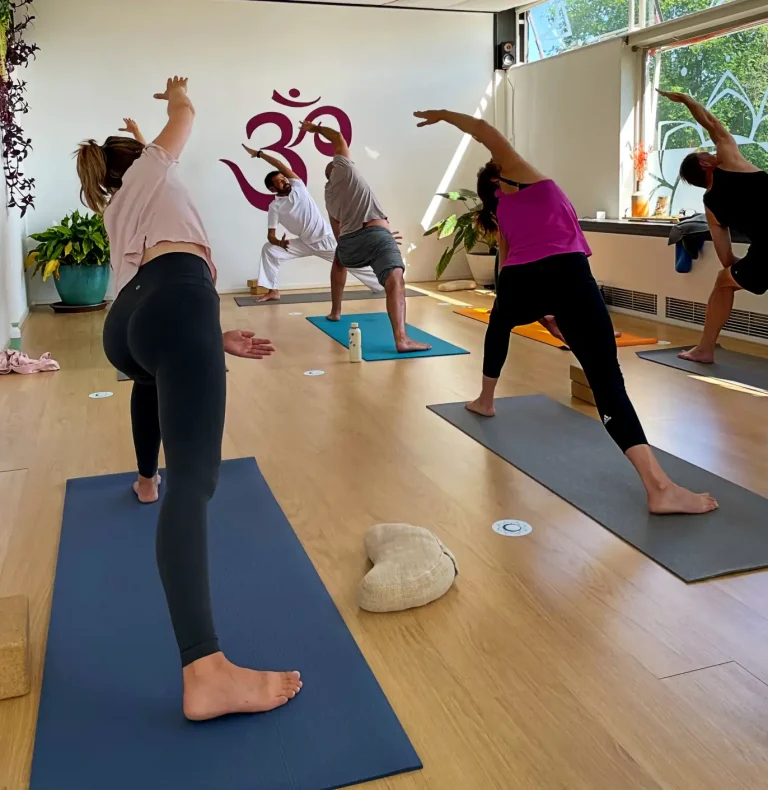
Yoga Alliance Certifications Explained
The most widely recognized yoga certification is offered by Yoga Alliance, a U.S.-based organization that sets standards for yoga teacher training programs worldwide. When researching programs in Bali, you’ll commonly see these certification levels:
- 200-Hour Certification: This foundational program serves as the entry-level standard for aspiring yoga teachers. It typically takes 3-4 weeks to complete and covers aspects such as Asana practice, teaching methodology, anatomy, philosophy, and a practicum experience. This certification is perfect for beginners with at least 6 months of regular practice.
- 300-Hour Advanced Certification: Designed for those who already hold a 200-hour certification, this program delves deeper into advanced techniques, specialized teaching methodologies, and yoga philosophy. It’s ideal for teachers looking to expand their knowledge and skills.
- 500-Hour Comprehensive Certification: This can either be a standalone program or a combination of 200-hour and 300-hour trainings completed consecutively. It provides the most in-depth training and typically takes about 2 months to complete.
- Specialized Certifications: Many schools offer specialized 50-to 100-hour trainings in specific styles, such as Yin Yoga, Prenatal Yoga, or Children’s Yoga.
For your certification to be recognized by Yoga Alliance, the school must be registered as a Registered Yoga School (RYS). According to Yoga Alliance policies, your certificate must include:
- The name of the RYS as registered with Yoga Alliance
- The program designation (e.g., 200-hour, 300-hour)
- Your legal name
- A handwritten signature from an authorized signatory
- The completion date
Many respected Bali programs, including Mahamukti Yoga, maintain this accreditation to ensure their graduates are eligible for international teaching opportunities. This certification will allow you to register as a Registered Yoga Teacher (RYT) with Yoga Alliance, opening doors to teaching opportunities worldwide.
Key Factors to Consider When Choosing a YTT in Bali
With numerous options available, how do you select the right program? Here are the essential elements to evaluate
1. Curriculum and Teaching Methodology
The curriculum is the heart of any yoga teacher training program. Look for a well-rounded program that balances these key components:
- Asana Practice: Daily practice of physical postures to develop your practice and understanding of alignment.
- Teaching Methodology: Techniques for instructing, demonstrating, observing, and correcting students.
- Anatomy and Physiology: Understanding how the body works in yoga postures and how to teach safely.
- Philosophy: Study of traditional yoga texts like the Yoga Sutras of Patanjali and the Bhagavad Gita.
- Practicum: Opportunities to practice teaching and receive feedback.
Different schools emphasize different aspects of yoga. Some focus more on physical practice, while others place greater emphasis on meditation, philosophy, or specific styles such as Vinyasa, Hatha, or Ashtanga. Choose a program that aligns with your interests and the style of yoga you want to teach.
2. Faculty Expertise and Background
The quality of your teachers will significantly impact your learning experience. Research the lead instructors’ backgrounds, including:
- Experience: How long have they been teaching yoga and leading teacher trainings?
- Lineage: What is their yoga lineage or tradition? Who were their teachers?
- Specializations: Do they have expertise in areas that interest you?
- Teaching Style: Consider taking a class with them online or reading student testimonials to gain insight into their teaching approach.
Also, consider the teacher-to-student ratio. Smaller groups (under 15 students) typically provide more personalized attention and feedback, which is especially valuable when learning to teach. At Mahamukti Yoga, for example, experienced faculty and small class sizes are integral to the learning environment, helping students feel supported and confident as they progress.
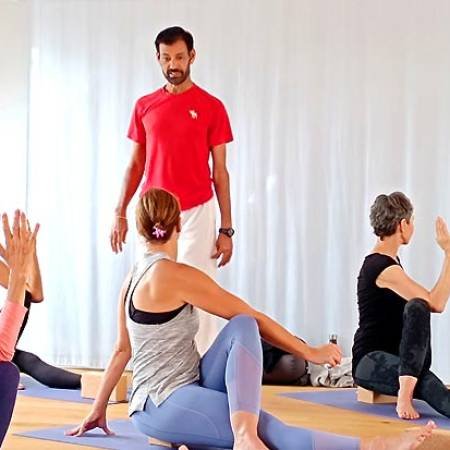
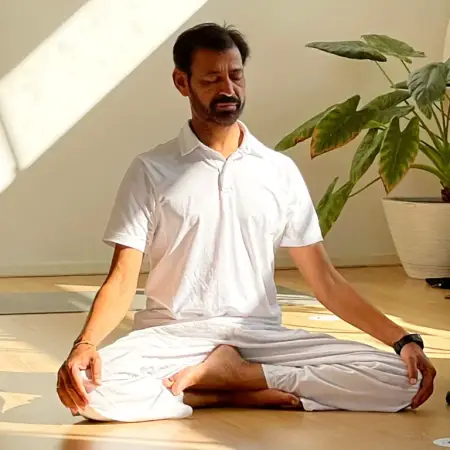
3. Training Style and Yoga Traditions
Yoga teacher trainings in Bali offer various approaches to the practice:
- Traditional Programs: Focus on classical yoga teachings, often with a strong emphasis on philosophy, meditation, and pranayama.
- Modern Approaches: May incorporate contemporary alignment principles, fitness elements, or fusion styles.
- Single-Style Programs: Concentrate on one yoga style (e.g., Ashtanga, Iyengar, or Kundalini).
- Multi-Style Programs: Expose you to various styles, providing a broader foundation.
Consider which approach resonates with you and aligns with your teaching goals. If you’re unsure which style you want to teach, a multi-style program might be the best choice to help you discover your preferences.
4. Program Duration and Intensity
YTT programs in Bali typically follow one of these formats:
- Intensive Programs: Completed in 3-4 weeks with full days of training (often 8-10 hours daily). These immersive experiences allow you to focus entirely on your training without distractions.
- Extended Programs: Spread over 2-3 months with a more relaxed schedule. These allow more time for integration and may be better if you prefer a less intense learning experience.
Be honest with yourself about your learning style and capacity for intensive study. While the immersive experience can be transformative, it can also be physically and emotionally challenging.
5. Location and Facilities
The setting of your training can significantly impact your experience:
- Accommodation: Options range from basic shared rooms to private villas. Consider your comfort needs and budget.
- Practice Spaces: Look for well-ventilated yoga shalas with proper props and equipment.
- Amenities: Some schools offer swimming pools, spa services, or proximity to beaches for relaxation during breaks.
- Meals: Most programs include vegetarian or vegan meals. If you have dietary restrictions, check if they can be accommodated.
Consider whether you prefer the spiritual atmosphere of Ubud, the surf and yoga vibe of Canggu, or the quieter settings of less developed areas.
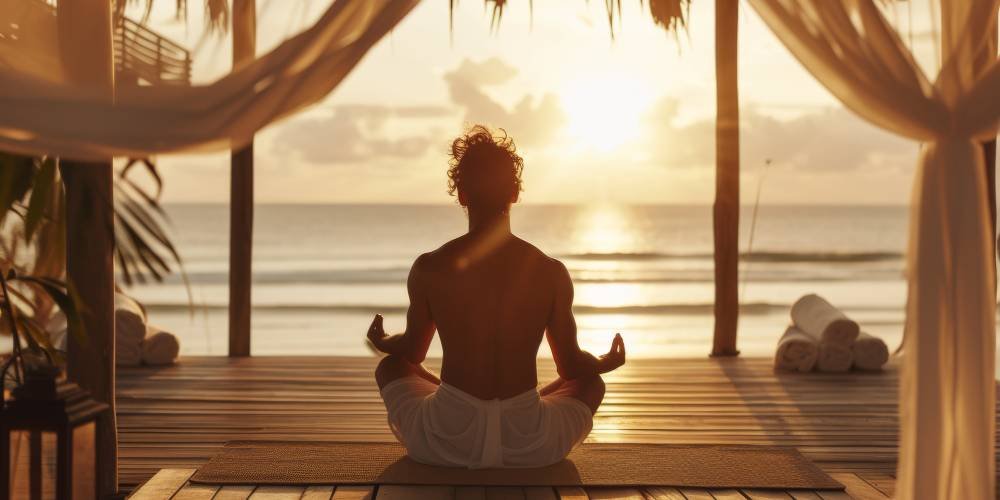
Self-Assessment: Clarifying Your Goals and Readiness
Before committing to a yoga teacher training program, take the time for honest self-reflection. Yoga is a deeply personal journey, and understanding your motivations will help you select a program that truly aligns with your needs. Ask yourself:
- Why do I want to do a yoga teacher training?
Is your primary goal to teach, to deepen your practice, to explore yoga philosophy, or to experience personal growth? If you envision yourself guiding others, prioritize programs with strong teaching methodology and practicum components. If your focus is personal enrichment, look for curricula rich in philosophy, meditation, or self-inquiry - What style of yoga am I most drawn to?
Whether you love the dynamic flow of Vinyasa, the alignment focus of Hatha, or the meditative pace of Yin, knowing your preference will help you narrow your search. Multi-style programs are great for those still exploring their path. - Am I ready for the physical and emotional intensity?
Intensive YTTs can be demanding. Assess your current fitness, flexibility, and willingness to embrace both challenge and vulnerability. If you’re unsure, consider building a consistent home practice or attending workshops before enrolling - What are my logistical constraints?
Consider your availability (can you commit to 3–4 weeks away?), budget, and support system. Ensure your choice aligns with your current life circumstances.
Taking a few minutes to journal your answers or even discussing them with a trusted yoga teacher can provide clarity and confidence as you move forward.
If you’d like expert guidance tailored to your unique goals, Mahamukti Yoga offers a free, no-obligation consultation for prospective students. Our experienced team can help you assess your readiness, explore which program best matches your aspirations, and address any questions you may have about styles, curriculum, or the Bali experience.
1000+ happy students
Successfully completed yoga retreats and yoga teacher training course
22+ years of teaching
Offering yoga courses in India and worldwide since more than 2 decades
Yoga Alliance certified
Worldwide certified Yoga Alliance USA certification with our courses.
The Importance of Personal Practice and Self-Care
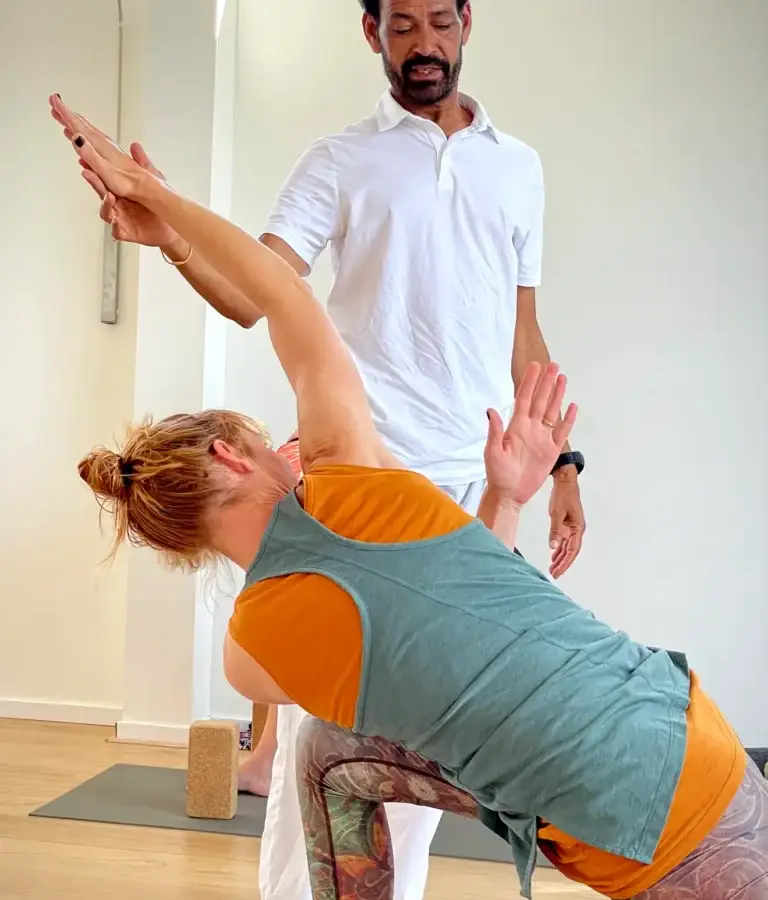
As you prepare for YTT—and especially if you plan to teach—cultivating your regular yoga practice is essential. Personal practice is the foundation of your teaching effectiveness and credibility. It’s where you deepen your understanding of yoga’s principles, refine your alignment, and explore the subtleties of breath and movement.
A consistent personal practice also supports your well-being, helping you manage the physical and emotional demands of training and, later, of teaching. Make time for restorative yoga, meditation, or journaling to recharge your energy and maintain clarity of purpose. At Mahamukti, we encourage students to nurture their practice before and after training, as ongoing self-care is key to sustainable growth as both a yogi and a teacher.
Self-care isn’t just about asana. It’s about listening to your body, respecting your limits, and nurturing your mental and emotional health. By modeling self-care, you will not only sustain your teaching career but also inspire your students to prioritize their own well-being.
Making Your Final Decision: Practical Steps
With your goals clarified and research complete, how do you make the final decision? Here are some practical steps to guide you:
- Shortlist and Compare Programs:
Create a shortlist of 3–5 programs that meet your criteria for accreditation, curriculum, style, location, and budget. Compare them side by side, considering what matters most to you—whether it’s the depth of philosophy, the reputation of the faculty, or the setting. - Reach Out and Ask Questions:
Contact the schools directly. Ask about the daily schedule, teaching methodology, assessment process, and post-training support. Inquire about the backgrounds of lead teachers and, if possible, request to speak with alums for honest feedback. If Mahamukti Yoga is on your shortlist, don’t hesitate to reach out with your questions—our alumni and instructors are always happy to share honest feedback and guidance. - Read Reviews and Testimonials:
Look for independent reviews on Google, Yoga Alliance, and social media. Pay attention to comments about the learning environment, supportiveness of staff, and how well-prepared graduates felt to teach. - Assess Your Readiness:
Take a self-assessment quiz or checklist to gauge your preparedness. Many reputable yoga resources offer free quizzes on anatomy, philosophy, teaching methodology, and personal readiness. Honest self-assessment ensures you choose a program that matches your current level and aspirations. - Trust Your Intuition:
Beyond all the research, trust your instincts. Which program excites you? Where do you feel a sense of belonging or inspiration? Often, your intuition will point you toward the right choice.
Beyond Graduation: What Happens Next?
Completing your YTT in Bali is a milestone, but it’s also the beginning of your journey as a yoga teacher. Here’s what to expect after graduation:
Registering with Yoga Alliance
With your certificate from a Yoga Alliance-accredited school, you can register as a Registered Yoga Teacher (RYT). This credential is recognized worldwide and can help you secure teaching opportunities in studios, gyms, and retreat centers.
Continuing Education:
The best teachers are lifelong learners. Consider advanced trainings (300-hour or 500-hour), workshops in specialized styles, or mentorships to deepen your expertise and keep your teaching fresh and relevant.
Building Your Teaching Career:
Start by offering community classes, teaching friends, or assisting at your local studio. Build your confidence, gather testimonials, and develop your unique teaching voice. Many Bali graduates go on to teach internationally, offer online classes, or even open their studios.
Self-Care and Work-Life Balance:
Teaching yoga is both rewarding and demanding. Prioritize self-care, set boundaries, and schedule time for your practice. A sustainable teaching career is built on balance and authenticity.
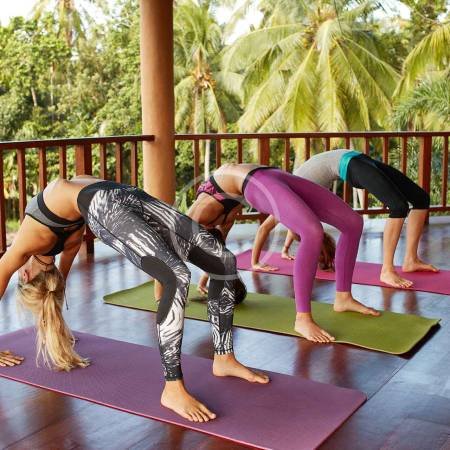
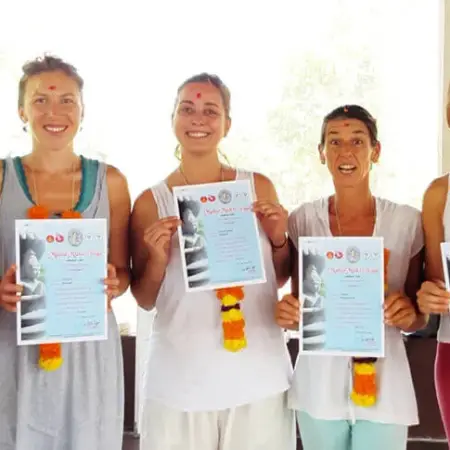
Final Thoughts: Your Journey Awaits
Choosing the best yoga teacher training in Bali is a deeply personal process. By clarifying your goals, researching programs and instructors, and listening to your intuition, you’ll find a training that not only meets your needs but also inspires your growth as a yogi and teacher. The island’s unique blend of spirituality, natural beauty, and a thriving yoga community creates the perfect backdrop for transformation.
With so many reputable programs available, it’s important to find a school that aligns with your values, learning style, and aspirations. Whether you’re seeking a traditional approach, a modern curriculum, or a supportive community, Bali offers a wealth of opportunities for every yoga journey.
If you’re looking for a program that combines experienced leadership, a welcoming atmosphere for beginners, and a holistic approach to yoga, one school consistently stands out among Bali’s many options.
Why Choose Mahamukti Yoga?
While Bali offers many retreat options, Mahamukti Yoga stands out for several reasons that make it particularly well-suited for beginners:
Experienced Leadership
Founded by Akhilesh Bodhi in 2012, Mahamukti draws on over 25 years of teaching experience. Akhilesh comes from the respected Sivananda Yoga lineage and has taught in more than 50 countries, bringing knowledge to guide beginners safely and effectively.
Beginner-Friendly Approach
The retreat programs are specifically designed to welcome those new to yoga, with:
- Small class sizes ensure personalized attention
- Careful instruction on proper alignment and modifications
- Progressive teaching that builds confidence day by day
- A supportive, non-judgmental atmosphere
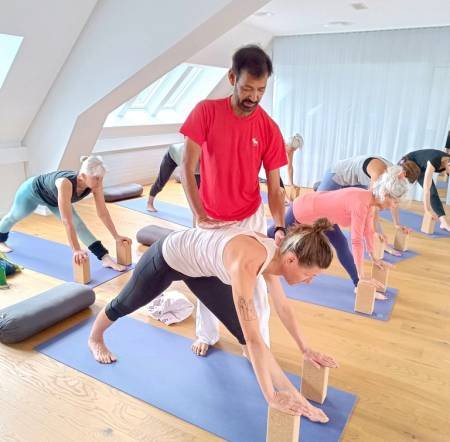

Holistic Experience
Beyond asana (physical postures), Mahamukti offers:
- Meditation and pranayama (breathing techniques) are suitable for beginners
- Philosophy discussions that make ancient wisdom accessible
- Optional cultural excursions and activities
- Community-building experiences
“As someone completely new to yoga, I was nervous about joining a retreat. But Mahamukti’s instructors made me feel so comfortable—I left feeling refreshed and confident in my practice.”
In summary: As you explore your options for yoga teacher training in Bali, consider what environment and teaching style will best support your growth. If a blend of tradition, expertise, and a supportive community resonates with you, Mahamukti Yoga is ready to welcome you on your journey.
Get in touch!
We'll be leased to hear from you and welcome you to one of our retreats in Bali. If you have any questions, feel free to contact us
